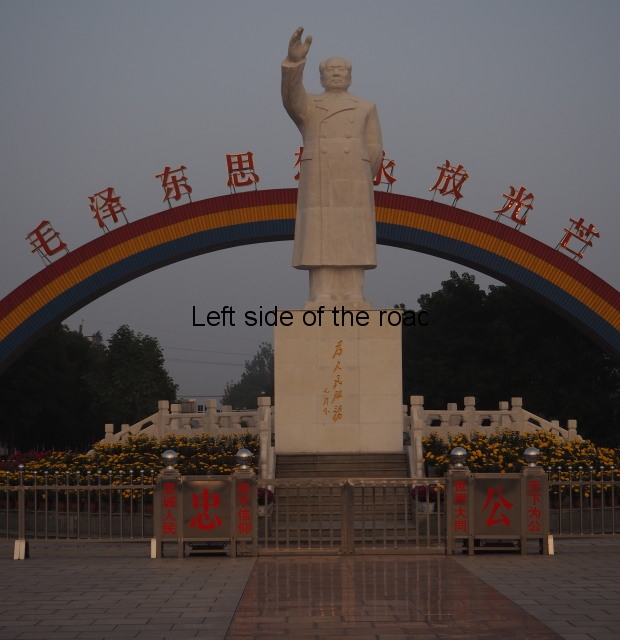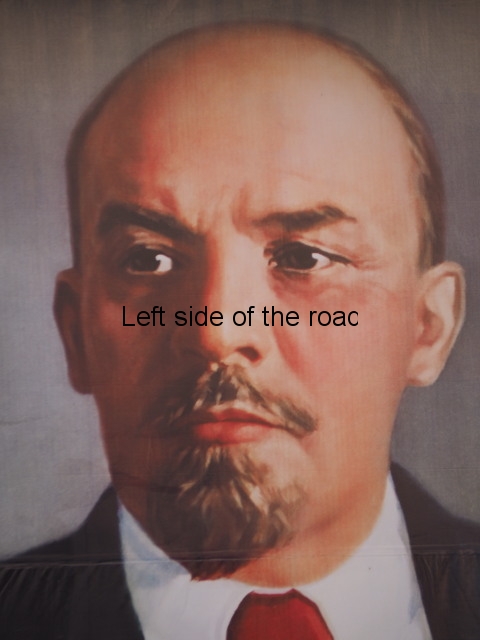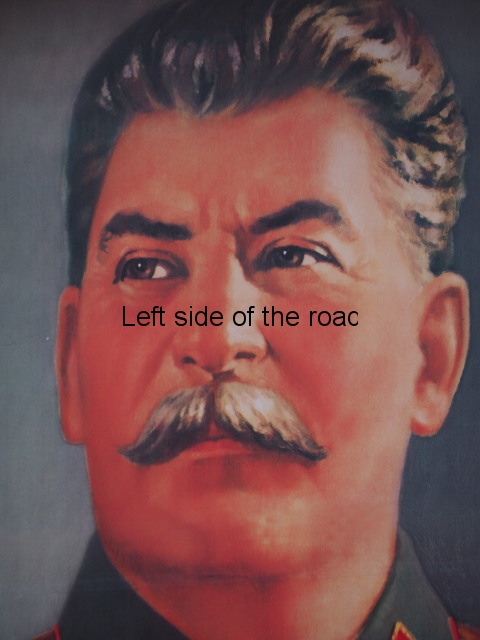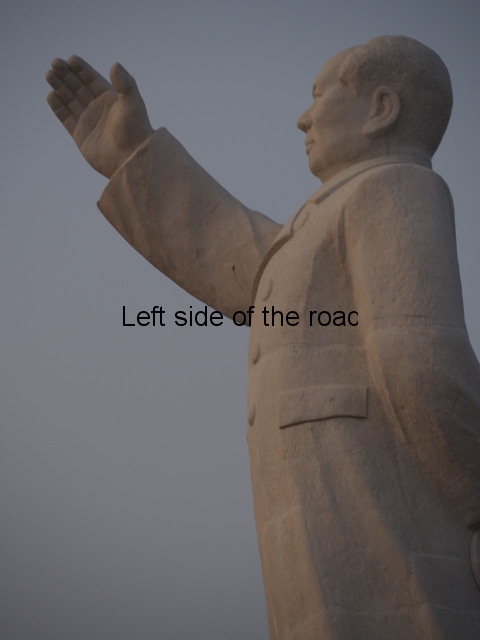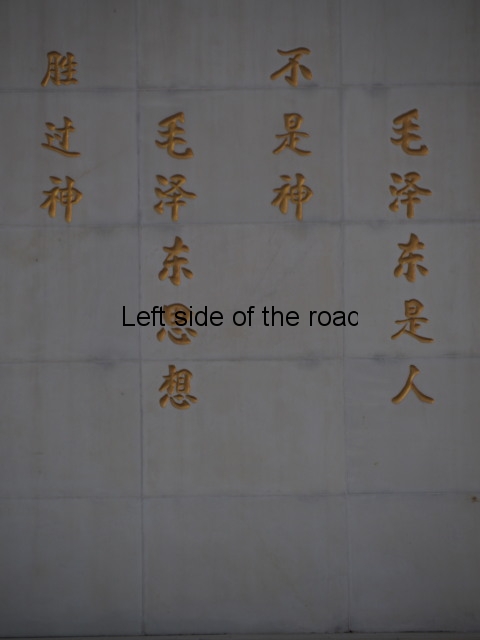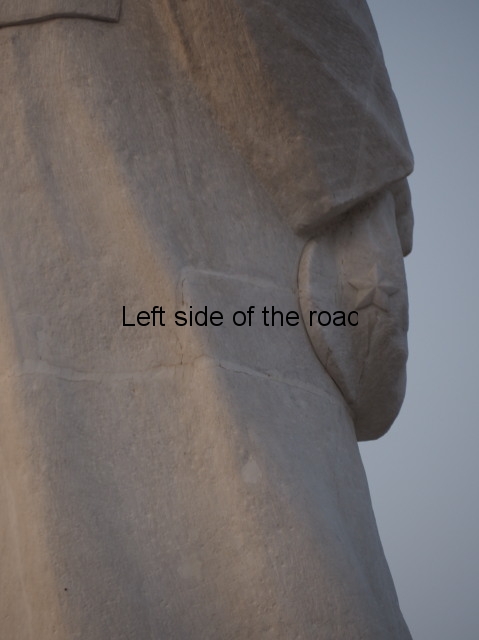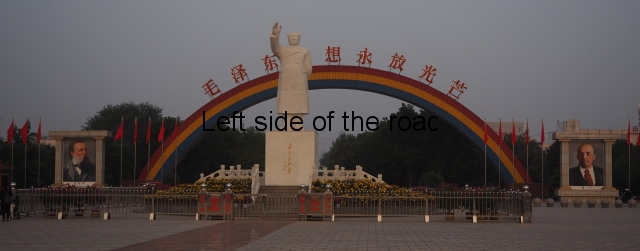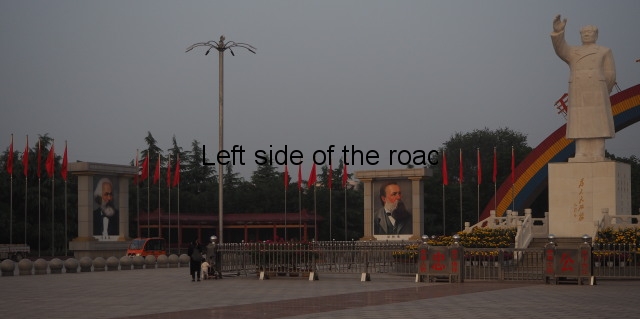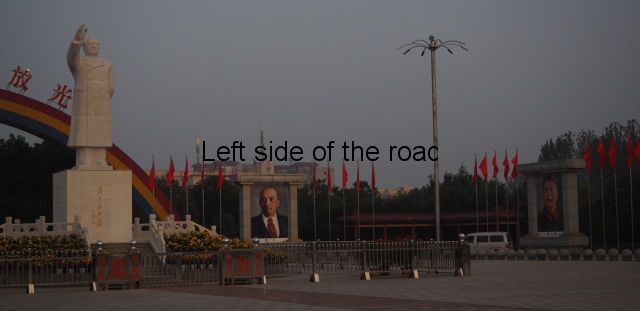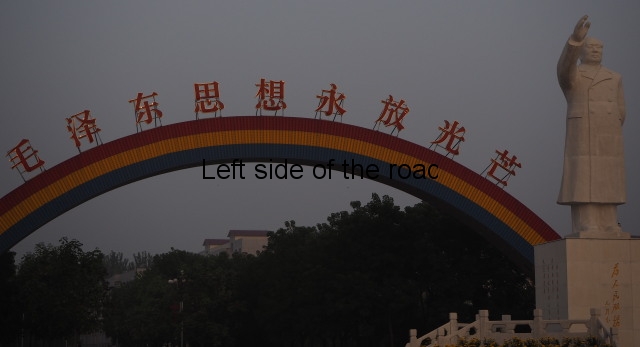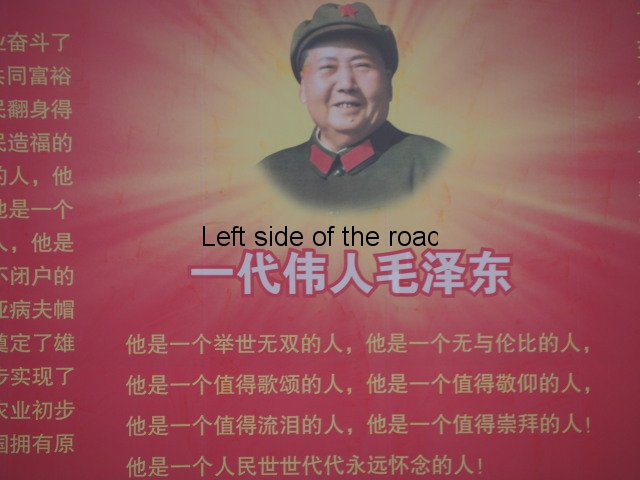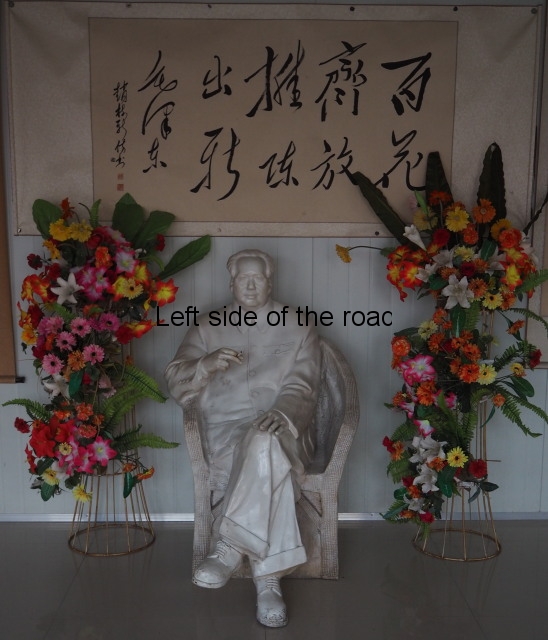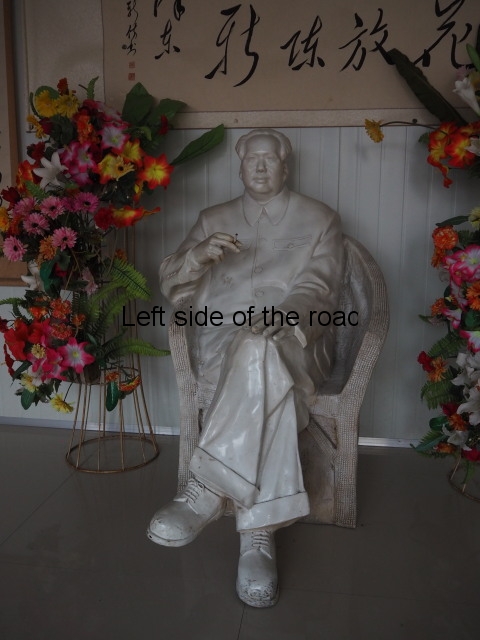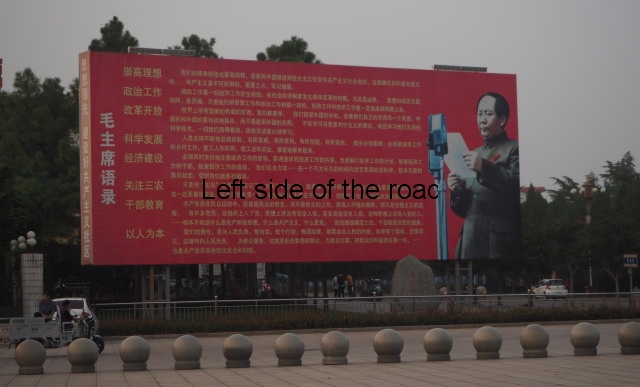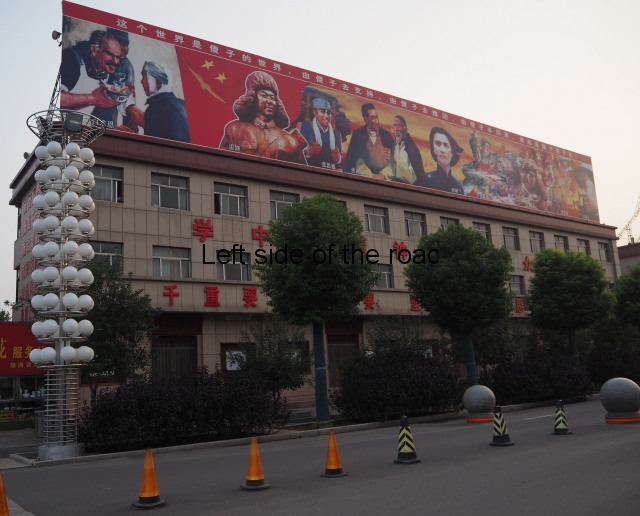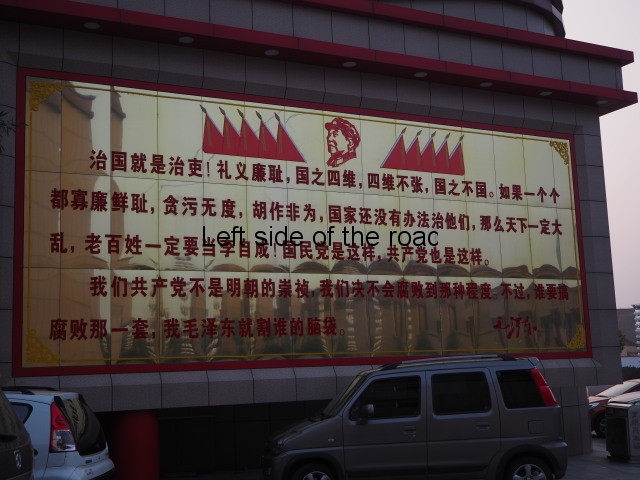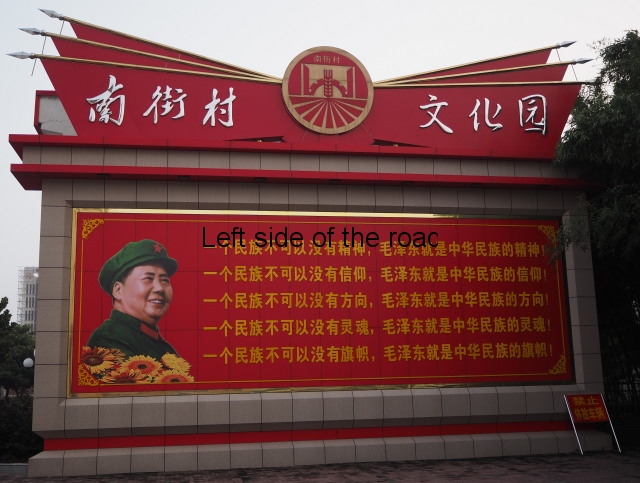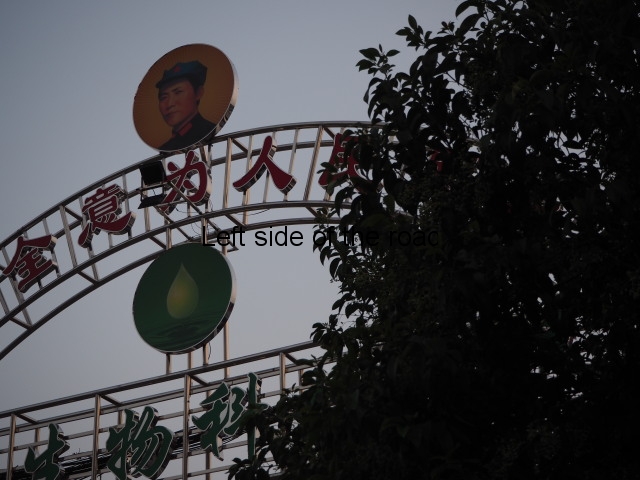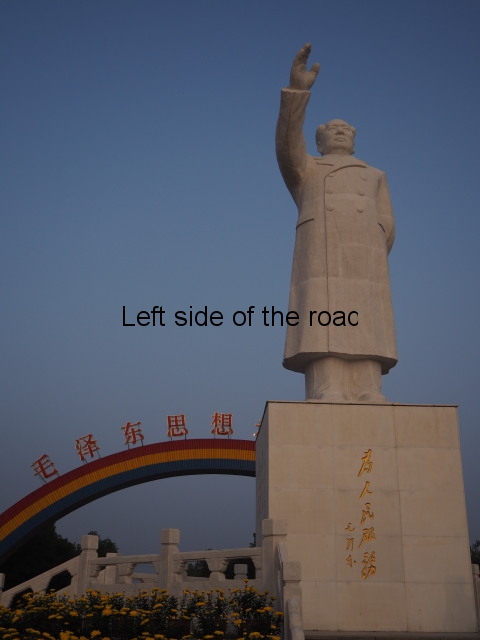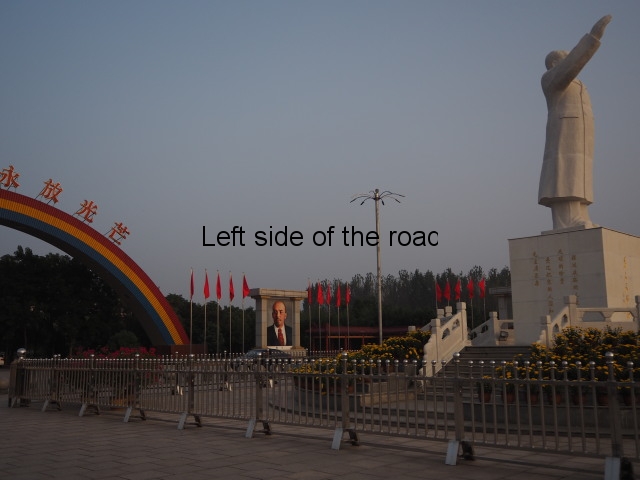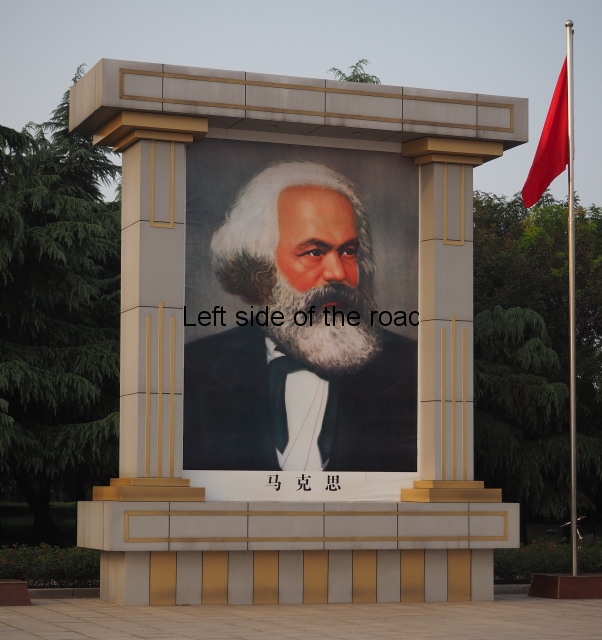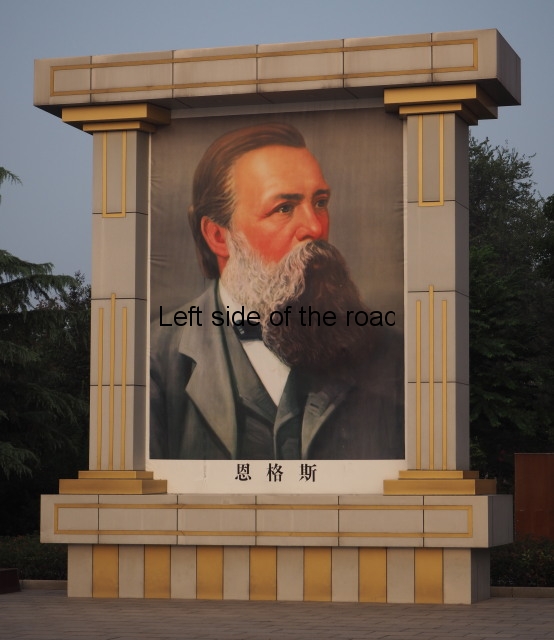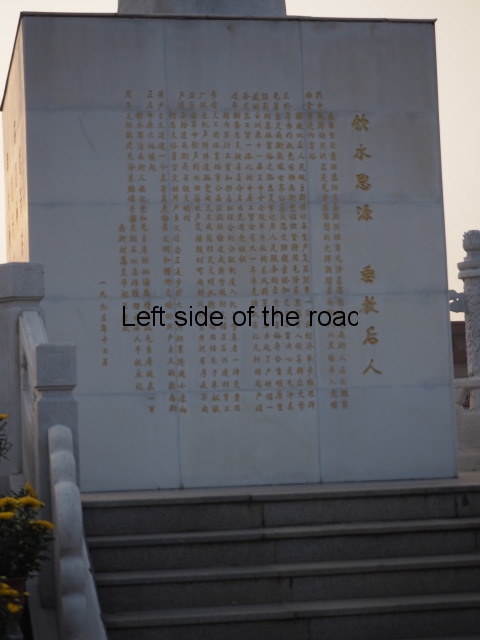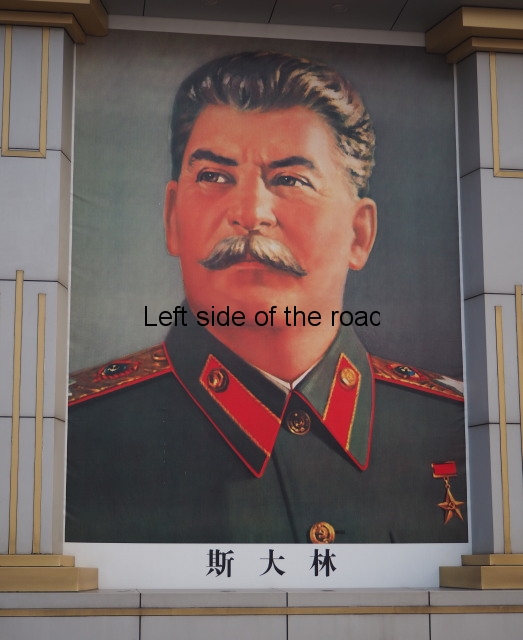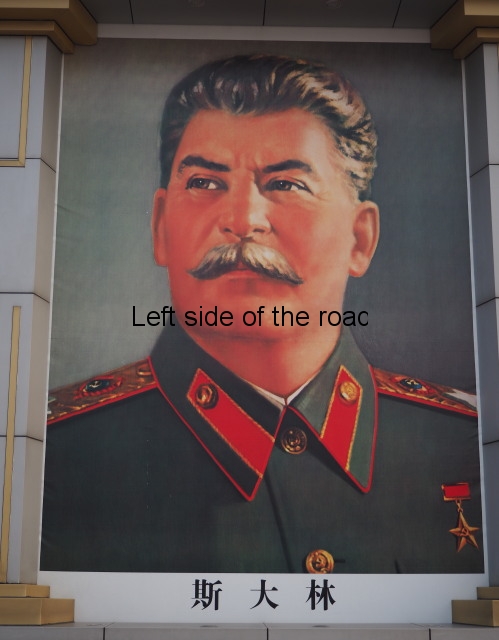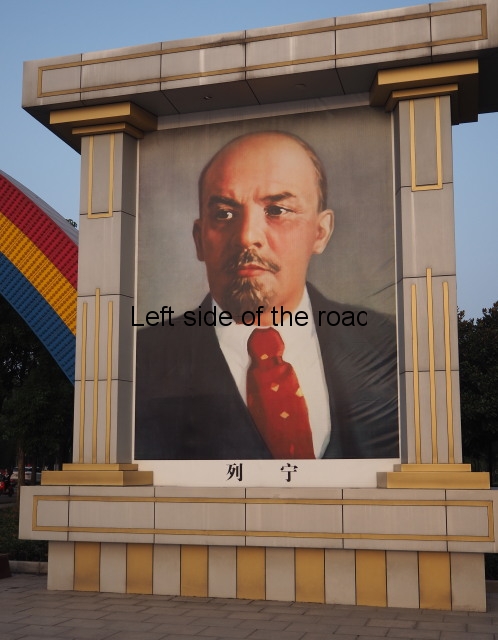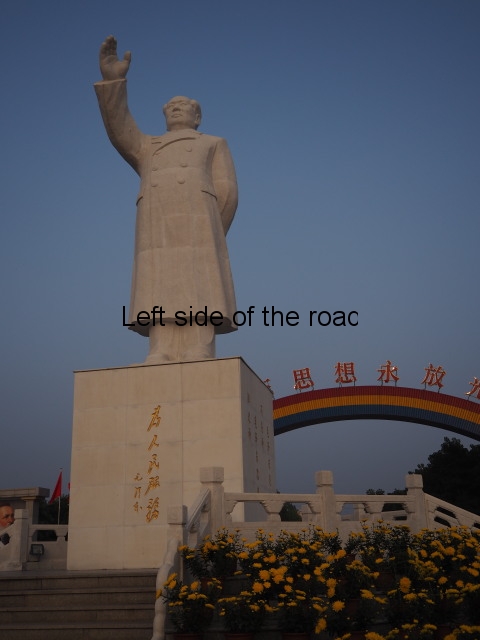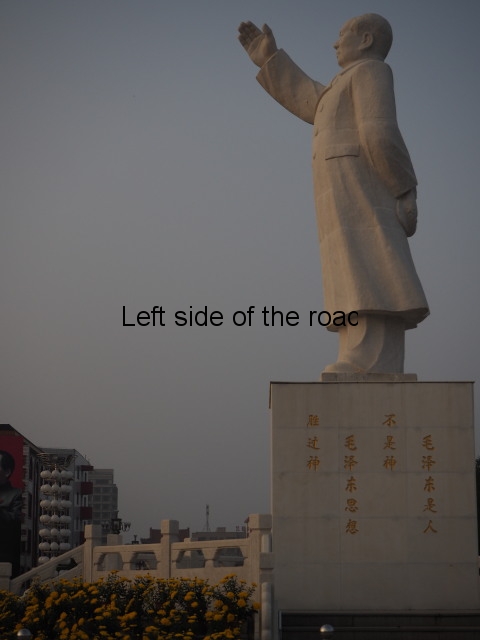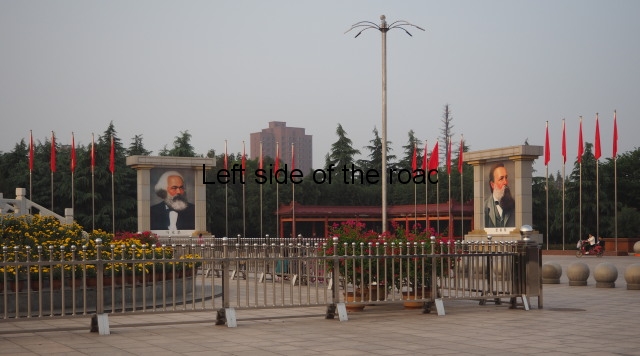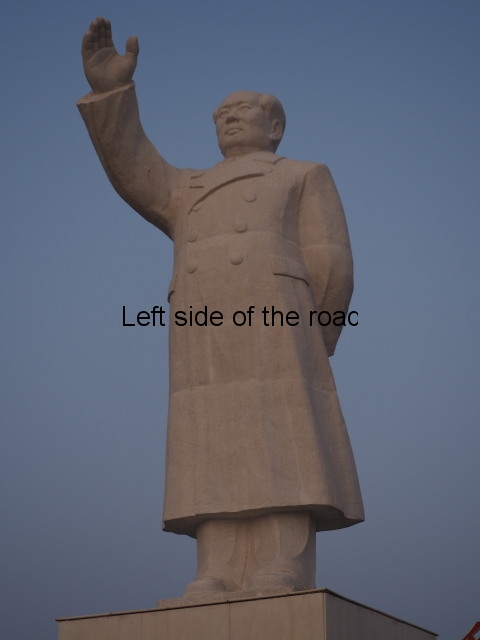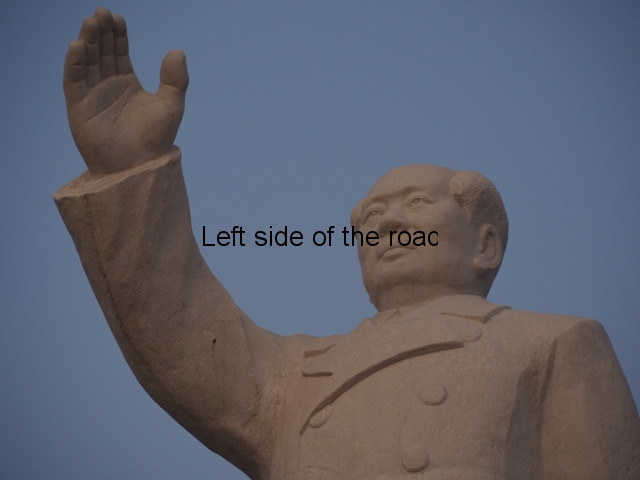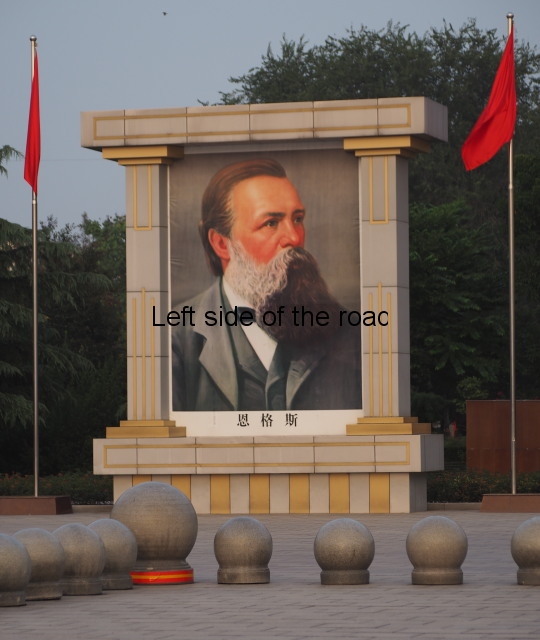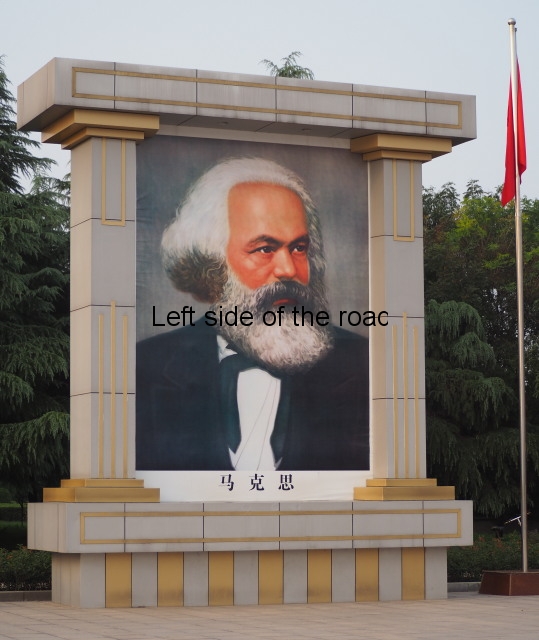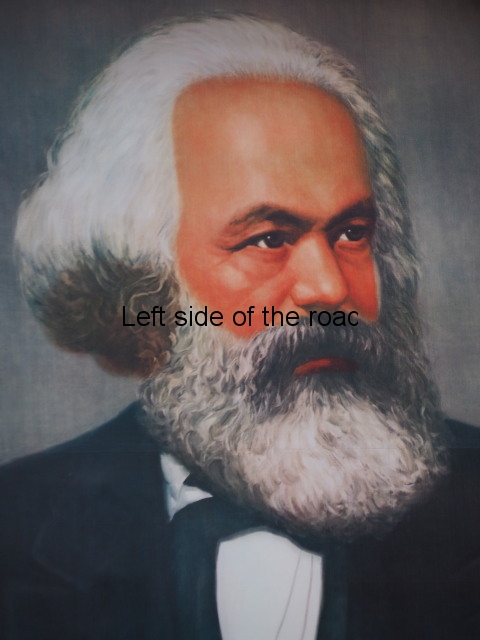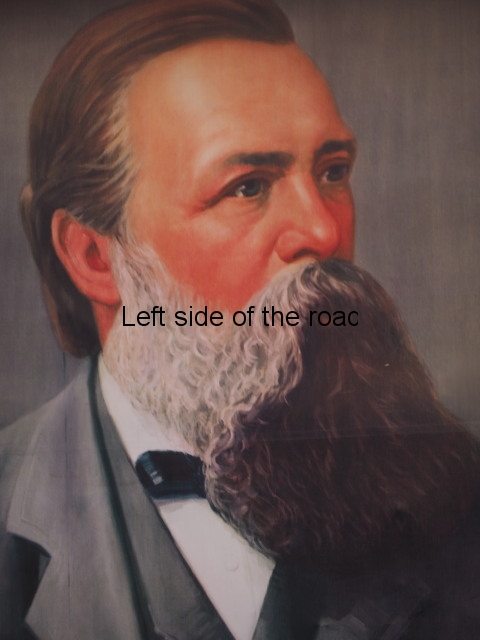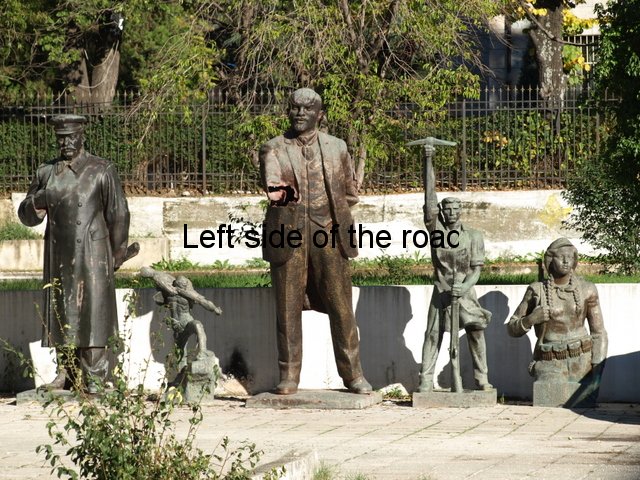
The East is Red Square, Nanjiecun
Nanjiecun (South Street Village) is in Linying County, Henan Province in the central part of the People’s Republic of China. What makes this place special (with a population of no more than 13,000 people) is the fame it has achieved as being ‘the last Maoist Commune in China.’
Whether it’s really possible for such a small place to maintain a Socialist Revolution is more than questionable, having to depend upon both loans from the Chinese capitalist banks as well as external, Japanese, investment. It can really be no more than a tolerated anomaly, a curiosity or a tourist theme park. If it ever posed a threat to the present day ‘capitalist roaders’ in Beijing then Nanjiecun would be crushed, both literally and figuratively, out of existence.
The fact that Nanjiecun exists (as does the politics and the actions of its people in the village of Marinaleda, in southern Spain) only goes to show the limitations of a small group of people attempting to build something better in a huge ocean of exploitation and oppression. Their efforts may be applauded and, at times, admired but we should never forget that to extend such ‘experiments’ demands the destruction of the present capitalist structure and until that is achieved (on a long-term, multi-generational basis) all is but chimera.
However, the merits or otherwise of Nanjiecun are not the subject of this post. A proper analysis of what has happened there – and why only there – since the destruction of Socialism in China would need a thorough study to understand why the Chinese people, in general, have rejected a past where the potential for the betterment of all has been rejected for the benefit and advancement of a relatively few corrupt thieves who are now some of the richest people int he world. It would also require a proper analysis of how we actually measure ‘poverty’. Capitalist standards are only concerned with ‘things’ and not the, sometimes, financially unquantifiable social capital that Socialism brings – the ‘iron rice bowl’ in the Chinese context.
No, this post is concerned with a single area of this present day commune – The East is Red Square.
In the Socialist societies in Europe (including the Soviet Union) the Communist Parties sought to commemorate the revolutionary past (and present) with statues. (One of the fallen statues, of Frederick Engels, from the Ukraine has even been recently installed anew in Manchester.) This preponderance of statues was not the case – at least to the same extent – in China. Yes, there were innumerable posters of Chairman Mao and his image was everywhere, on posters, in paintings and on the badges worn by most of the population. However, statues as such were relatively few. This means that when a statue has been installed – at the same time as the renegades within the Communist Party of China are going further and further away from Chairman Mao’s ideas – there’s always a story behind the decision, although sometimes that story might be difficult to find.
The large statue of Chairman Mao in front of the railway station in Dandong (the principal border crossing point between China and the Democratic People’s Republic of Korea) is a case in point. So far I have failed to find out any information of why or when.
The situation is clearer in Nanjiecun.
The people in the village decided to reject and roll back the ‘de-collectivisation’ and privatisation that was becoming the norm in China with Deng Xiaoping’s claim that ‘to get rich is glorious’. Selfishness, that had been challenged in the years following Mao’s declaration of the People’s Republic in 1949, was turned into a virtue and the predominantly peasant population of the country fell back into the insularity and individuality of their backward, pre-revolutionary, rural culture.
Nanjiecun’s ‘experiment’ must have been relatively successful in the 1980s as there was enough surplus for them to pay for the installation of a large statue of Chairman Mao in what is now known as ‘The East is Red Square’. The statue was erected in 1993 and I assume it was inaugurated on the 26th December – the centenary of Chairman Mao’s birth.
At some time in the next decade the four large portraits of the ‘greats’ of Marxism-Leninism – Karl Marx, Frederick Engels, Vladimir Ilyich Lenin and Joseph Stalin – were added to the monumentality of the square. (I, personally, would have added a fifth – Enver Hoxha of Albania – but I know a number of Maoists would not agree.)
There’s always a potential problem when it comes to Socialist art – nuance can be everything. To give an idea of how this is an issue I’ll refer to capitalist commentators who can ‘see’ subversion in a painting or a musical score produced in the Soviet Union that went unnoticed by the authorities (i.e., the ‘intellectuals’ were too clever for the ‘stupid’ Communists) only seconds after arguing that art is ‘apolitical’ and that capitalist art doesn’t aim to perpetuate the system. It’s not their analysis I dislike and detest – it’s their crass hypocrisy
I’ve always argued that art IS political and so it’s valid to critically evaluate any new monuments or ‘celebrations’ of the past (in whatever form they might take place) that might be appearing in China. As the present leader, Deng IV, seems to be attempting to take on some of the trappings of Mao – stripped of any revolutionary, Communist ideology – this might become an issue in the not too distant future.
It’s possible to attack Mao by praising Mao – this was something that took place during the Great Proletarian Cultural Revolution. After attacking the so-called ‘personality cult’ of Mao from the late 1970s those enemies of Maoism could well create a new ‘personality cult’ of Mao based solely on the person.

Chairman Mao in Dandong
The Chinese Revisionists and Counter-revolutionaries have been unable to achieve the same rejection of Mao as happened in the Soviet Union with Lenin and Stalin or in Albania with Hoxha. Mao is still seen in China, by the overwhelming majority of the population, as a great Chinese leader – millions still queue every year to visit the Mao Mausoleum in Tienanmen Square in Beijing. It’s possible, therefore, that those who seek to establish greater legitimacy and maintain their hold on power will try to play the nationalist card and turn Mao into a purely ‘Chinese’ personality – the antithesis of how Mao would have seen his achievements – thus turning the country inward. This is not that far-fetched as it might seem as the level of nationalistic fervour has been stoked up in recent years to justify China’s imperialistic ambitions.
All this doesn’t accept what made Mao great in the first place – that was the taking of Marxism-Leninism, applying it in the Chinese context and by learning from both the success and mistakes of the past Socialist revolutions developing the theory of the Cultural Revolution and taking Marxism to a new level, (although becoming a bit of a mouthful) to Marxism-Leninism-Maoism.
The statue of Mao in Dandong is one such example of this new, depoliticised, depiction of the great Chinese leader. There’s nothing on, or around, the statue which refers to what made him such a great leader in the first place, his uniqueness as a leader of the world proletariat and peasantry – his being a revolutionary Communist. It’s a great statue but you get the impression that, like the statues of the Roman Emperors, you could just replace the head with whoever was in power at the time and there would be no real difference. As it stands at the moment it’s just a statue of a 60 year old wearing a big overcoat who, for some unknown reason, has his right hand raised and pointing to some unknown location in front of him.
The statue of Mao in Nanjiecun doesn’t suffer from that defect. Coming from those who knew the importance of the politics, of the necessity of a Communist Party, of the necessity of a revolutionary ideology, all these attributes are represented in the statue itself in a very simple and almost unobtrusive manner, but there nonetheless, – and that’s the star on the cap he holds in his hand.

The Red Star
As I’ve written in a number of posts about the Albanian lapidars (such as the mosaic on the Historical Museum, the mosaic of Bestrove, the Durres monument to the anti-Fascist struggle, amongst others) where the star has often been the target of the fascists and reactionaries – eradicate that and they think they can eradicate Communist politics. So including it in a ‘new’ monument the people of Nanjiecun made their own political statement.
That political statement was made even stronger with the addition of the four portraits of the Marxist ‘Greats’. Whether whoever designed the layout of the square considered how it would look when completed what we have now is a history of the development of Marxism thought through; successes and failures; revolutions and counter-revolutions; twists and turns; suffering and sacrifice; elation and despair, to arrive at where we are now with Maoism being the pinnacle of the development of the revolutionary theory of the working class. We are not in a situation that we would have wished just over a hundred years after the October Revolution of 1917 but we are where we are. At least the revolutionary theory has moved forward. Whether we make the most use of all that history is another matter.
In a sense the statue and portraits in The East is Red Square are in a bit of a time warp – that of the Great Proletarian Cultural Revolution. Mao’s image is of what he would have looked like in the mid 1960s and the paintings of the four Marxists are almost exact copies of the coloured posters that were available throughout the world from the late 1960s until the counter-revolutionary coup of Deng and his goons after the death of the Chairman in September 1976.

JV Stalin
The portraits are behind Mao as he looks to the east. In front of him, on either side, are two large billboards with a lot of text in Chinese characters. (In fact for a Socialist political monument there’s a lot of text full stop – including on the plinth upon which Mao stands. Although unusual it shows the level of literacy that the Socialist state had achieved during the time of Communism. The people can actually understand what is written – unlike most religious locations throughout the world where emphasis is upon image due to the high level so of illiteracy.)
The one on Mao’s right also carries an image which looks very much like the photo of him making the declaration of the People’s Republic in Tienanmen Square in October 1949. Unfortunately I’m not able to understand Chinese characters but would surmise that the text is that very declaration.

Declaration of the People’s Republic of China 1949
On his left the image is of an older Mao, probably from the 1960s, so I would hazard a guess that the text is from one of the exhortations he made from the podium over the Gate of Heavenly Peace to the massed Red Guards in Tienanmen Square.
The area has changed over the years. I’ve seen photos where there were trees behind the statue. They might have been OK as bushes but started to become a bit much after a few years and they have been removed so the immediate area around the statue is now clean and clear. I’ve also read that there was a permanent ‘guard’ at the site but there was no evidence of that during the (regrettably short) time I was there. Also there was no music playing (as is often reported) so don’t know if this is the now permanent situation.
I made a number of mistakes and got to the village quite late in the afternoon and many of the places immediately next to the square were closed so I wasn’t able to get a feeling of how the area had been developed for the growing number of tourists that visit Nanjiecun.
Getting there
It’s possible to stay in the Commune’s own hotel, which is located right next to the square. The problem is one of communication as the staff only speak Mandarin.
If a day trip is all that is looked for then getting to Linying railway station is the best bet and then walking a kilometre or so or getting a taxi to the village. There are also regular buses from Zhengzhou (the nearest big tourist destination) to Linying.
GPS:
33.80611111
113.95416667
DMS:
33º48’21.9”
113º57’15.2”

